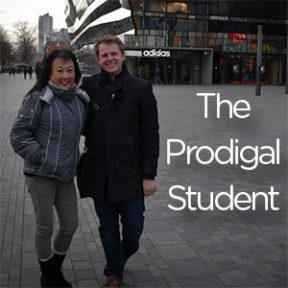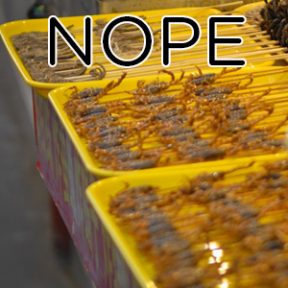 While I appreciated China’s ban on families having more than one child to take a bold step towards reducing over population, this policy has created a society of only children.
While I appreciated China’s ban on families having more than one child to take a bold step towards reducing over population, this policy has created a society of only children.
When the government dictated that a family can have only one offspring, couples often did unthinkable things to ensure that their one child could carry on their family name. If having a male child guarantees that the family name will live on and that this male child will be able to take care of them in their retirement better than a girl, then aborting and giving girls up for adoption became the thing to do.
But now, 37 years after the ban, China has 30 million more men than women.
Talk about taking a decent plan to reduce over-population and really messing it up for cultural purposes. When China had the largest population that was growing out of control, they set up a plan that actually did reduce their population growth. Instead of finding another solution to balance the sexes today, China recently announced that they are lifting the ban on the one-child policy. Oh NO!!!
While I was in China last week, I talked with many people in Beijing who said that this new policy probably wouldn’t change things.
Young couples are busy with their careers and don’t want to have several children. The cost of raising and educating children is so high that they don’t have the funds to take care of both their children and their parents, too.
Chinese youth will be faced with the problems of a “sandwich generation” – those couples who have to care for their own children as well as both sets of parents.
Now that there is a shortage of women in China, maybe families will see the benefits of raising girls. Hopefully they’ll see that a society of mostly men doesn’t work, and that young Chinese female professionals and entrepreneurs are soaring to the top. Yes, women can support a family and many out earn their male counterparts.
So hopefully with the lift on the one-child ban, Chinese families will continue to have just one child and appreciate having both boys and girls!








 Nobody likes to throw up, but I take that to a new level. I’d rather die than to throw up!
Nobody likes to throw up, but I take that to a new level. I’d rather die than to throw up!
 Armed with
Armed with 



 As Sean Linkletter’s college advisor way back in 2008, I was so proud to see him in Beijing last week.
As Sean Linkletter’s college advisor way back in 2008, I was so proud to see him in Beijing last week. 

 As we walked down “Snack Street” in Beijing, I saw the familiar rows of food vendors that you see in any metropolitan cities tourist districts. The wafting scent of fried goods filled the air and Chinese people everywhere were eating all kinds of treats on long bamboo skewers. But when I looked closer at the various kinds of meats on the skewer, I couldn’t believe my eyes.
As we walked down “Snack Street” in Beijing, I saw the familiar rows of food vendors that you see in any metropolitan cities tourist districts. The wafting scent of fried goods filled the air and Chinese people everywhere were eating all kinds of treats on long bamboo skewers. But when I looked closer at the various kinds of meats on the skewer, I couldn’t believe my eyes.
 I traveled halfway across the world to introduce Merit Academy’s one-on-one classes to Chinese agents last week.
I traveled halfway across the world to introduce Merit Academy’s one-on-one classes to Chinese agents last week. 
 When my daughters were born, I vowed to educate them by creating a comprehensive K-12 curriculum, hiring the best teachers, and giving them unparalled experiences.
No, this wasn’t homeschooling – I never taught a class. I started a private school called Merit Academy in 1994. We changed our structure from small classes to one-on-one classes in 2000, and that’s when we saw students really thrive.
We’ve had hundreds of students and each one of them have gone off to do incredible things.
I’ve watched how the academic pendulum went from New Math to Whole Language to Common Core. I’ve observed (with frustration) the Department of Education’s many attempts at educating the whole child; that’s the main reason I’ve been in the business of education since 1979.
For me, the best part of this job is when students come back to meet with me to discuss a plan for THEIR CHILDREN! I’m thrilled to guide them as parents and honored that they value the unique benefits they received as students at Merit. I don’t think I’ll ever retire!
Besides, where will my future grandchildren be educated?
When my daughters were born, I vowed to educate them by creating a comprehensive K-12 curriculum, hiring the best teachers, and giving them unparalled experiences.
No, this wasn’t homeschooling – I never taught a class. I started a private school called Merit Academy in 1994. We changed our structure from small classes to one-on-one classes in 2000, and that’s when we saw students really thrive.
We’ve had hundreds of students and each one of them have gone off to do incredible things.
I’ve watched how the academic pendulum went from New Math to Whole Language to Common Core. I’ve observed (with frustration) the Department of Education’s many attempts at educating the whole child; that’s the main reason I’ve been in the business of education since 1979.
For me, the best part of this job is when students come back to meet with me to discuss a plan for THEIR CHILDREN! I’m thrilled to guide them as parents and honored that they value the unique benefits they received as students at Merit. I don’t think I’ll ever retire!
Besides, where will my future grandchildren be educated?

 Watching the
Watching the 
 Most college kids scramble to find courses each term. I know; I work with many of them. They search the schedule of classes for interesting courses or get tips from friends about easy GEs (general education courses). When they finally get frustrated, or when their parents realize they’re throwing lots of money down a big black hole, one of them contacts me to help them figure out what they’re really doing in college and how to create a plan to get them to graduation.
Most college kids scramble to find courses each term. I know; I work with many of them. They search the schedule of classes for interesting courses or get tips from friends about easy GEs (general education courses). When they finally get frustrated, or when their parents realize they’re throwing lots of money down a big black hole, one of them contacts me to help them figure out what they’re really doing in college and how to create a plan to get them to graduation.